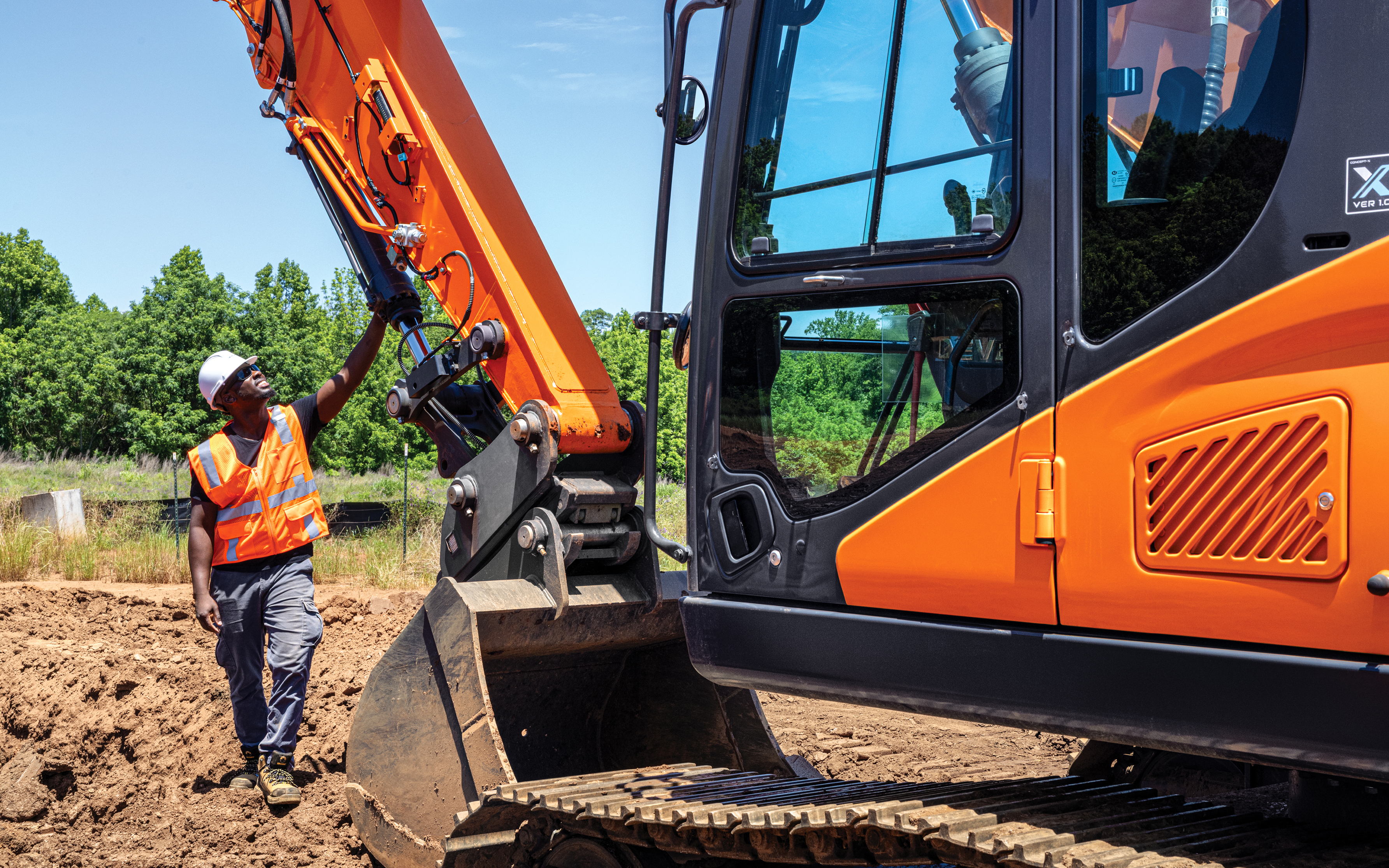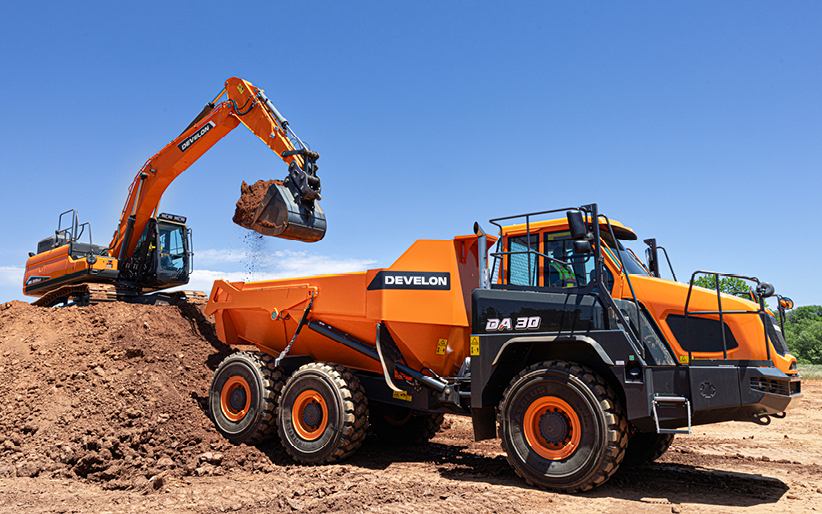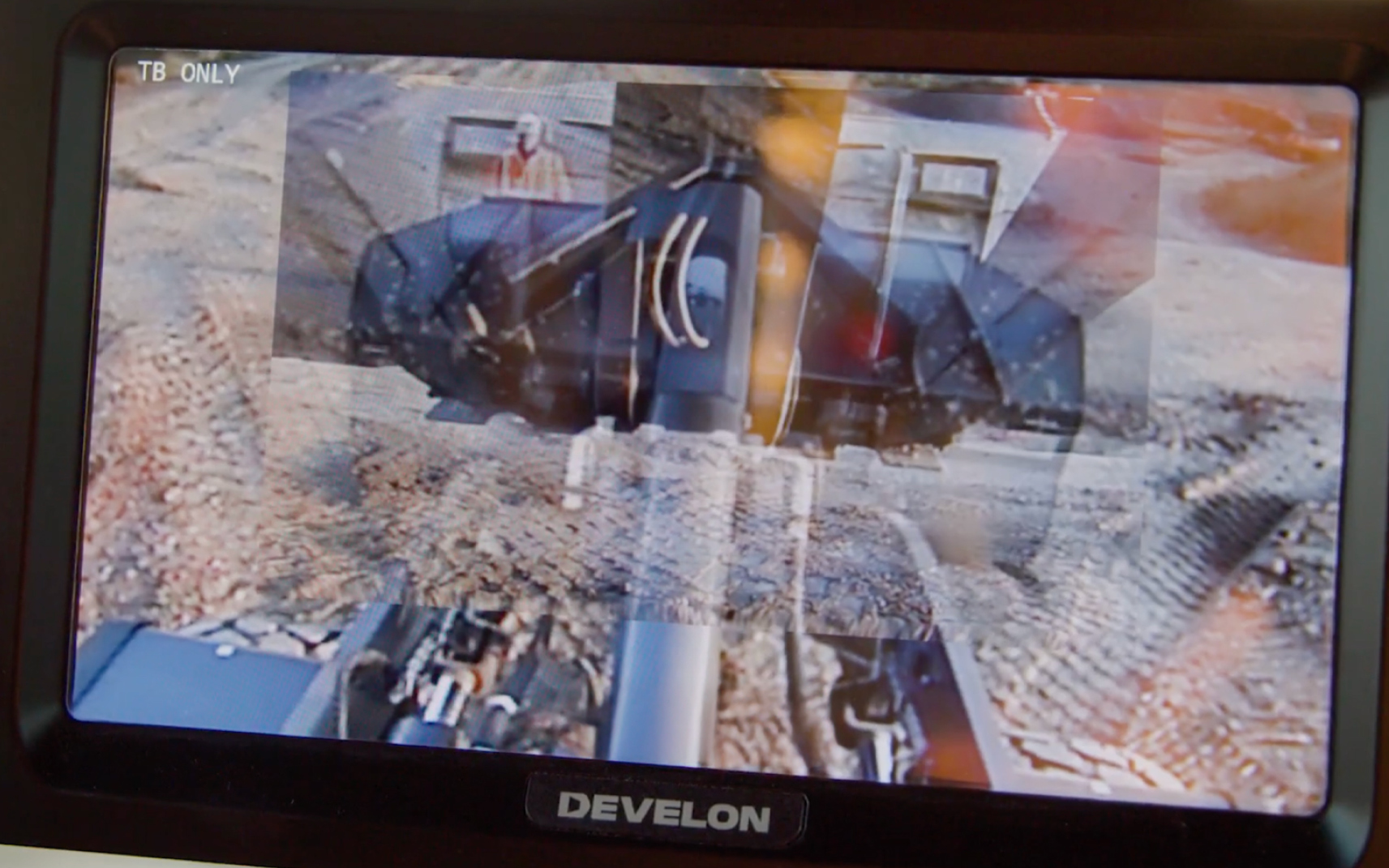6 Hauling Tips to Minimize Excavator Loading Challenges
Transporting heavy machinery to and from a jobsite is an everyday task, but there are special considerations when moving machinery in the 80- to 100-metric-ton size class — like a large crawler excavator. It’s built for big challenges — digging, lifting, and loading heavy materials, such as dirt, stone, and sand, in a variety of applications. You can’t simply place it on a trailer or transport truck as easily as you can a smaller excavator.
Thomas Lee, product strategy manager at DEVELON, dives into the steps to take for minimizing loading challenges and improving your transportation to the job site. You need to follow the recommended loading procedures as well as making sure the trailer can support the machine before transporting a large excavator.
1. Know Your Excavator Specs
First, understand the dimensions and weight of the excavator. This includes the height, width, length and weight. Also, consider what attachments you need to haul. Match the transport vehicles, like trailers or heavy haulers, to the equipment.
“All states and local municipalities have DOT regulations based on gross vehicle weight rating — the maximum operating weight or mass of a piece of equipment as specified by the manufacturer,” Thomas says.
“Load ratings vary from state to state. Check federal, state and local laws and regulations about weight, width, and length and height of a load.”
Remember to account for the weight of the trailer when calculating the total weight you will be hauling.
Depending on the size of your excavator and local transportation requirements, you may need to disassemble the machine before transporting it.
The removable counterweight and retractable undercarriage frame make the DX1000LC-7 easier to transport. The counterweight can be hydraulically lowered to the ground or to a separate trailer for transport to the jobsite.
Work with your local equipment dealer for the correct way to disassemble the machine and reassemble it at your jobsite.
2. Determine the Need for an Oversize or Overweight Permit
You may need a bigger trailer with a higher weight rating if you are transporting a bigger excavator.
“Special approval or transportation permits may be needed for oversize loads along your planned route,” Thomas says.
“The permit may also require you to have escort vehicles that drive with you to alert other drivers of your load onto the road.”
Designate a transportation route ahead of time. You should:
- Watch for narrow roads and bridges with weight restrictions and overpasses.
- Make sure your trailer and the excavator can pass under bridges and overpasses.
- Try to pick a route that’s easy to drive.
Oversize loads should have proper banners, signs, and lights.
3. Understand and Follow Basic Loading Procedures
Follow basic operating and loading guidelines as outlined in the owner’s manual. Here are a few loading and safety procedures:
- Park the trailer on firm, level ground.
- Inspect the trailer, including signal lights, clearance, trailer deck, and wheels, before loading your excavator.
- Check that the ramps can handle the weight of the excavator. Add blocking under the ramp for support, if needed.
- Remove grease, debris, or mud from the ramp and equipment that could cause the excavator to slip or slide.
- Travel up the ramp with the heaviest end first when loading the excavator onto the trailer.
- Run the engine at the lowest speed setting. Travel at the slowest speed possible when loading and unloading the excavator.
- Distribute the weight of your excavator on the transport vehicle. Improper weight balance increases the pull on the transport vehicle and tire wear.
4. Secure Your Excavator
Secure your crawler excavator according to DOT regulations in a manner that prevents it from tipping or rolling off the trailer while traveling. Your equipment must not be able to shift in a way that affects the stability of the trailer.
Once your crawler excavator is on the trailer, follow these tips:
- Lower the bucket or attachment to the trailer floor.
- Stop the engine and engage the parking brake. Turn the battery disconnect switch to the “off” position.
- Lock all doors and covers before transport.
- Place chocks, cradles, or wedges in front of and behind each track. This will help prevent any rolling or shifting during transport.
- Install tie-downs at the front and rear tie-down positions as identified in your owner’s manual.
Most manufacturers recommend at least four tie-downs to prevent any movement. Some trailers have D-rings, chain slots, or built-in strap rails.
“They allow you to easily connect your equipment to the trailer,” says Thomas. “Always use the recommended connection points and securements. It will help minimize damage and maximize the effectiveness of transporting your excavator.”
Inspect the tie-down points and tie-down equipment used to secure the machine.
“All pins and connection points should be secure and the hooks still functional,” says Thomas. “If any cracks, stretches or fatigued links are found, remove the tie-down equipment from service. It should be able to meet or exceed the excavator’s weight rating.”
Follow all DOT requirements as well as best practices outlined in the manufacturer’s owner’s manual.
5. Fasten Excavator Attachments
Secure the attachment or accessory to the crawler excavator during transport. If that isn’t possible, secure the attachment with chain straps.
Route hoses on hydraulic attachments in an orientation where they are not interfering with the excavator on the trailer.
“Hoses should not be lying underneath the machine, located in the way of a tie-down or connected in a manner where they could become disengaged,” says Thomas. “Secure all hydraulic hoses according to the owner’s manual.”
Once you have loaded and secured your crawler excavator and attachments, make sure that you or the driver can see out of the front or sides of the transport vehicle.
6. Safely Unload Your Excavator and Attachments
After you’ve reached your destination, safely unload your crawler excavator and attachments. Here are a few items to keep in mind.
- Clear the unloading area of large debris, making the ground as even as possible.
- Walk around the machine while it’s on the trailer or transport truck. Make sure nothing looks out of place.
- Free the load, releasing the chains and ties one at a time.
- Slowly back your excavator down the ramp.
- Complete a final inspection. Check the crawler excavator and attachments to make sure they’re ready to operate at full capacity.
Transporting crawler excavators and attachments takes careful consideration and planning. But, it doesn’t have to be difficult or unsafe if you follow proper hauling techniques and local transport regulations.
Curious about our large excavator offerings? Learn all about our DX800LC-7 and DX1000LC-7 crawler excavators.
All states and local municipalities have DOT regulations based on gross vehicle weight rating. Load ratings vary from state to state. Check federal, state, and local laws and regulations about weight, width, length, and height of a load.”Thomas Lee, Product Strategy Manager

By DEVELON
DEVELON North America is a leading manufacturer of heavy and compact construction equipment and attachments, serving customers in a variety of industries with durable, reliable, and productive machines.



